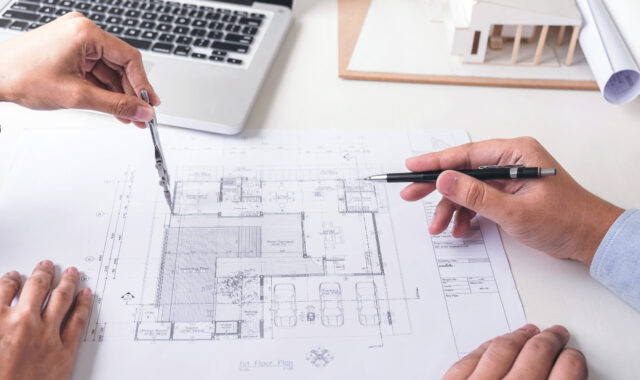
Daniel W.
Architectural AssistantWhat led you to follow this career path?
I chose to pursue architecture because it offered the opportunity to combine my interest in and passion for the arts with my proficiency for maths and science.
What qualification(s) or training did you complete?
The typical route to qualify as an architect in the UK involves a minimum of five years study at university and completion of at least two years’ practical experience. Architectural education is divided into three parts: you attain your Part 1 through an undergraduate degree, your Part 2 through a master’s degree, and your Part 3 is the final professional examination required before qualifying and being able to register as an architect. I completed my Part 1 at the University of Edinburgh (with an exchange year at Universidad San Pablo CEU, Madrid), and am currently pursuing my Part 2 part-time at the London School of Architecture (LSA) while working at a London-based architectural firm.
How are your qualification(s) or training useful in your everyday job?
From my experience over the last three years in practice, I would say that a lot of what architects do is learnt on the job. However, studying for my Master’s degree at the same time as working in professional practice has given me a more rounded perspective on the relationship between academia and practice and how each can enrich the other. The opportunity offered in an educational environment is to explore ideas in a thorough but often speculative way, while working in industry requires more groundedness and the ability to negotiate the adjacencies between architecture and other disciplines.
What does an average working day look like for you?
My days are incredibly varied, and the work you do day-to-day depends on the type of project you are working on. My time is generally divided between: meetings with colleagues, clients and consultants; producing drawings, design studies, visuals and renderings using a variety of 2D and 3D CAD (computer-aided design) packages; collaborating on presentations and report documents; and researching materials and products.
What aspect of your role do you most enjoy?
I enjoy the diversity of projects I get to work on and the wide range and scope of things I get to do. In my job, I have found myself involved in the design and delivery of buildings and urban projects at a huge variety of scales, across commercial, cultural, institutional and infrastructural sectors internationally. Tackling these kinds of projects is complex and challenging, demanding the bridging of technical and creative skill sets from concept to detail design, manufacture and construction, and requiring imagination, curiosity and adaptability paired with a faculty for critical and lateral thinking.
What aspect of your job do you find most challenging?
I might answer in the same way as the above! The diversity of the work I get to do is exciting, but this variety also requires that you become comfortable moving quickly between ideas and scales, and with operating in a variety of capacities and handling a wide range of responsibilities. This can be quite a challenge, especially when you first enter into professional practice – but it’s also a lot of fun.
What would be your top piece of advice for anyone wanting to become an architectural assistant?
My advice would be to recognise the significance of the undertaking. As mentioned earlier, architecture is a demanding profession that requires a great deal of commitment over a long period of education, and it is important to make sure you recognise this and are prepared for it. But the process itself can be hugely rewarding; and the profession immensely fulfilling!






Comments